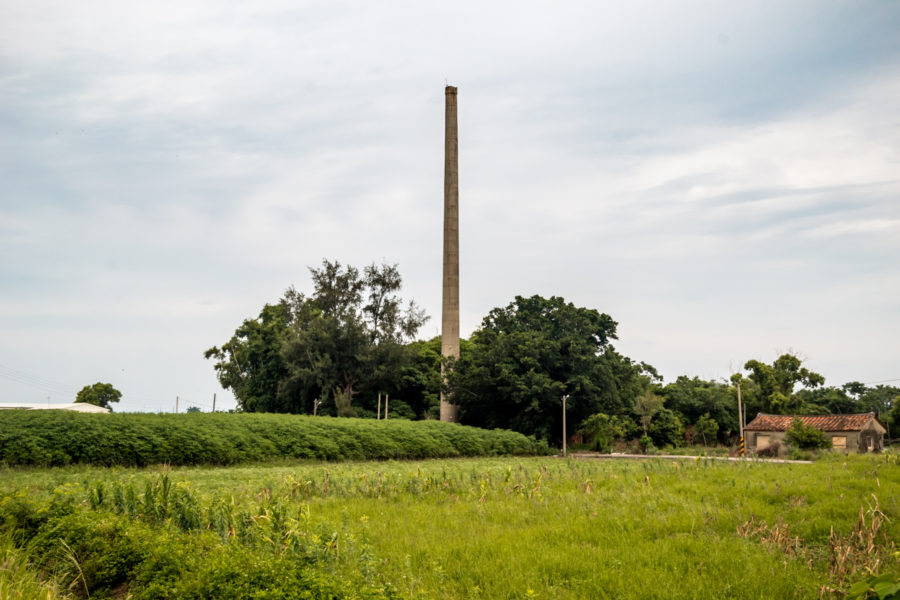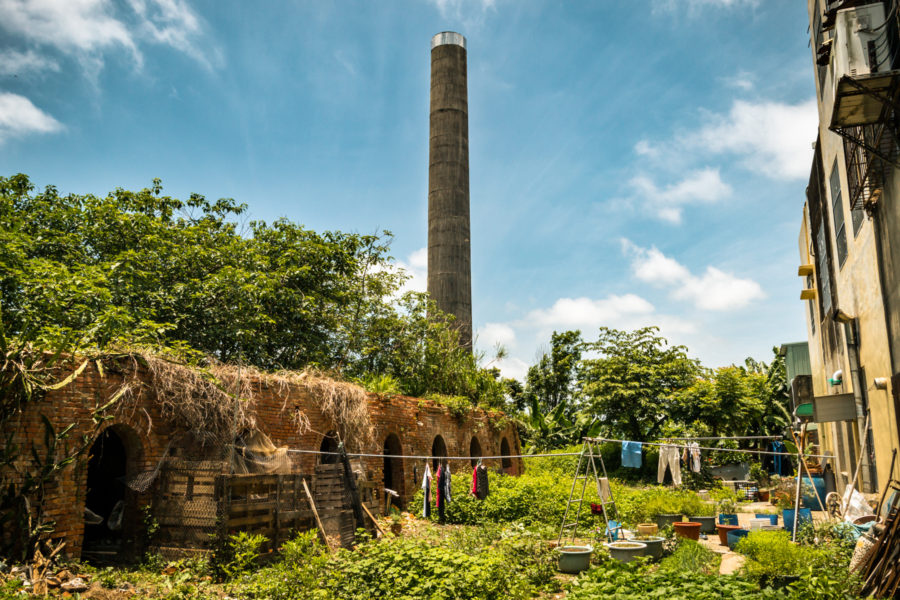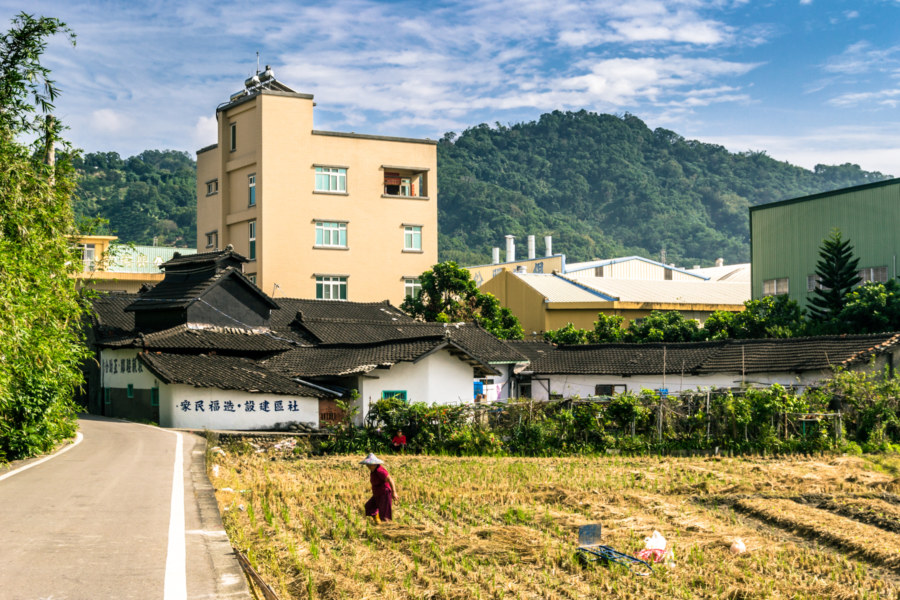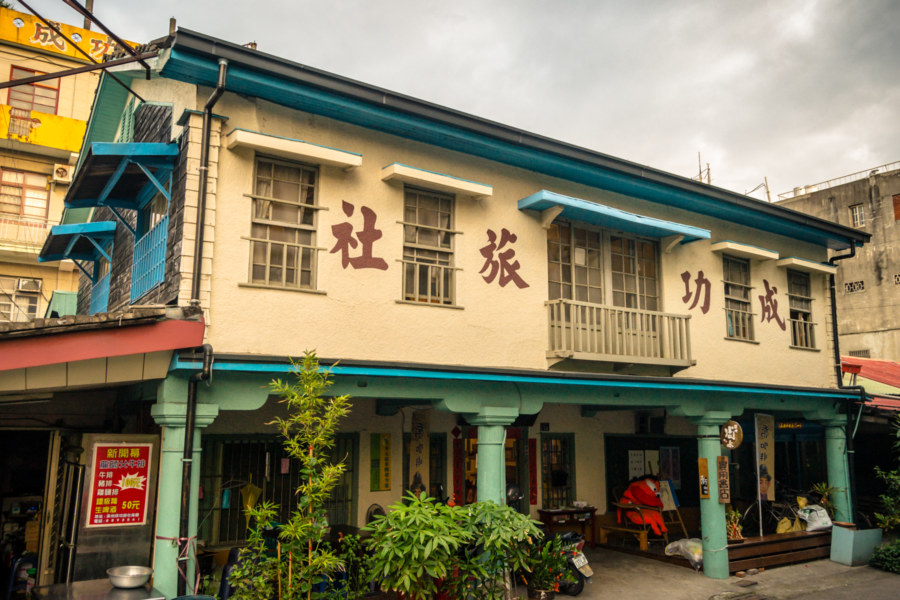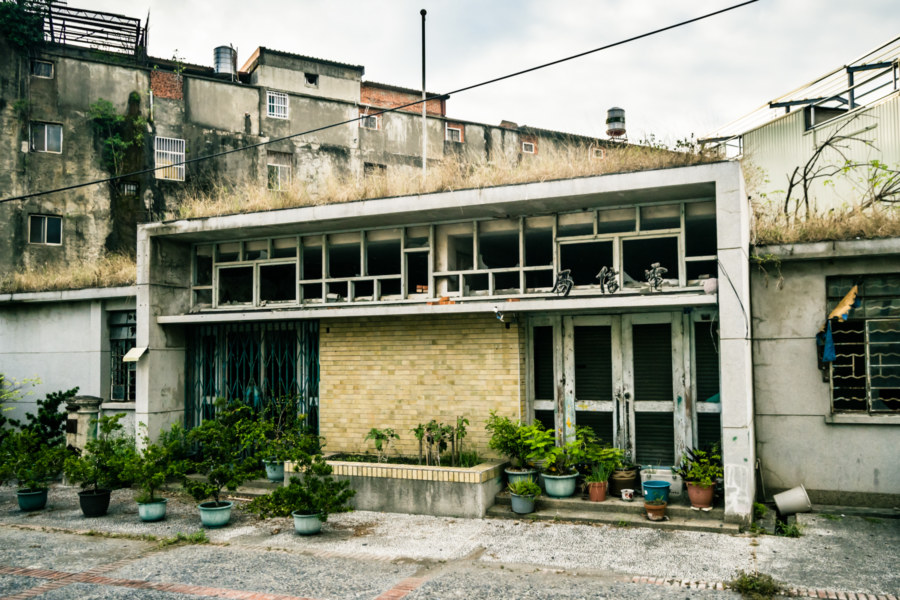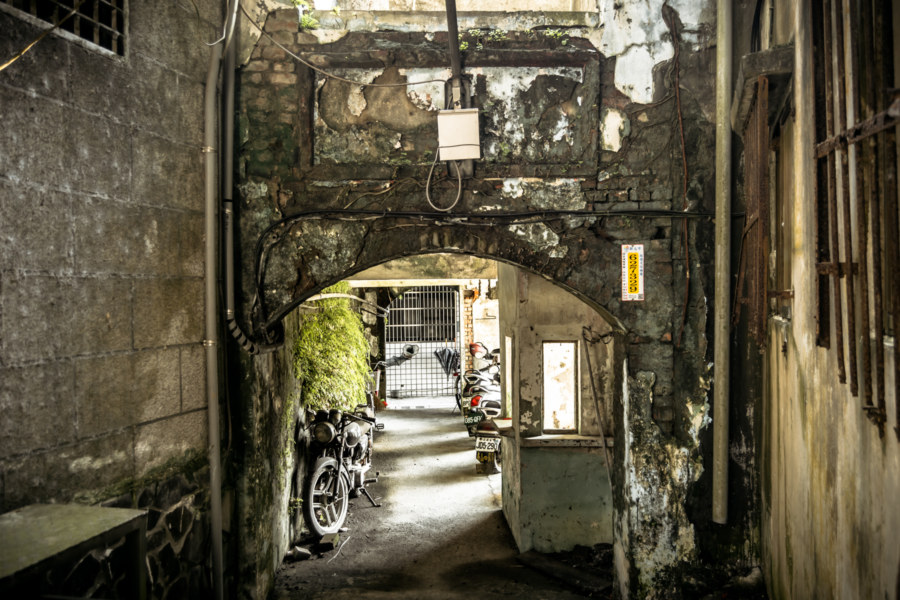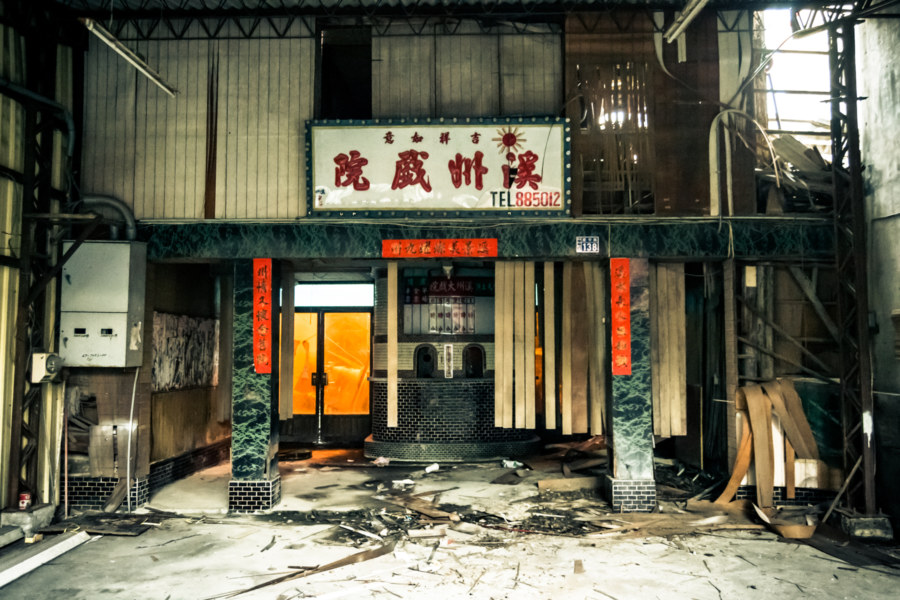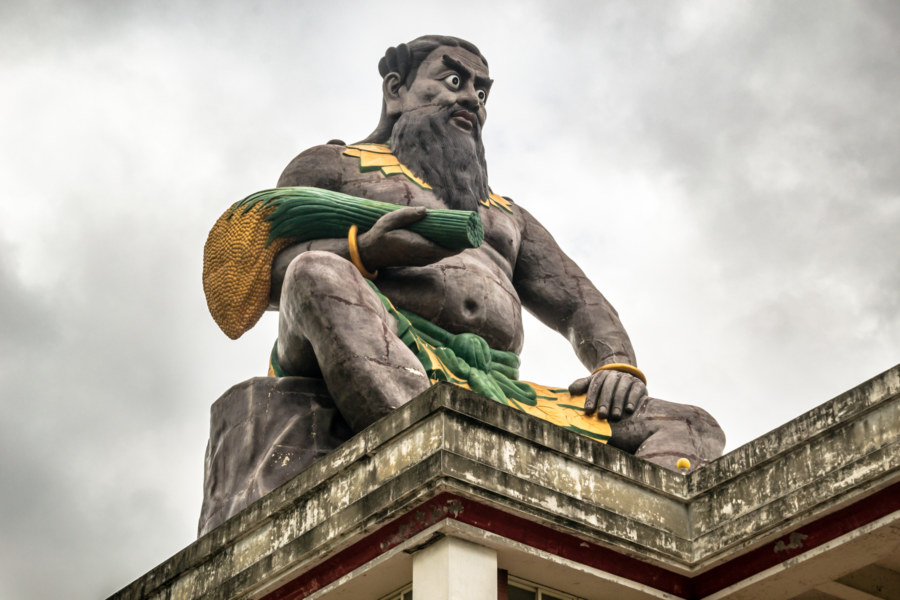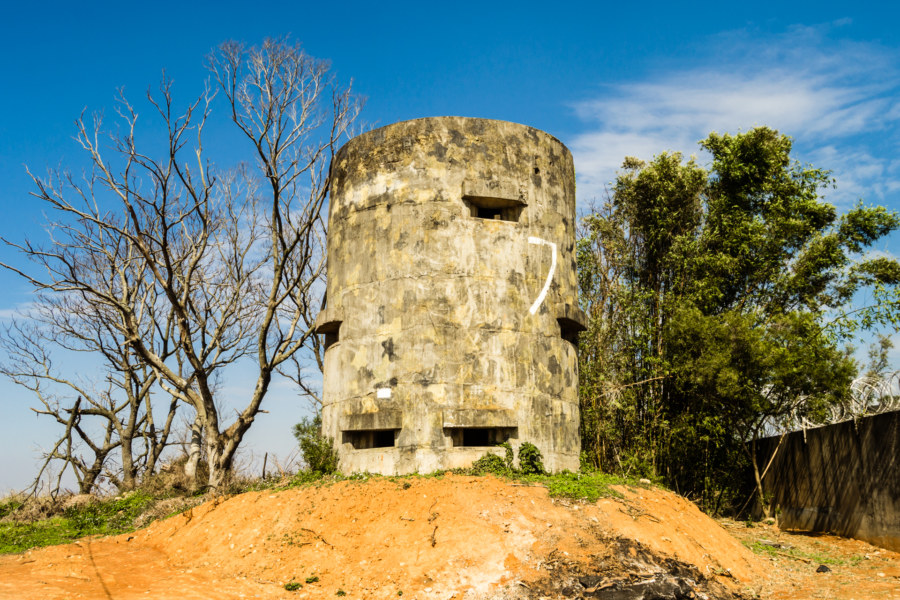Recently I wrote about the Liùjiǎo Brick Kiln 六腳磚窯, an obscure abandonment in rural Chiayi, Taiwan. While attempting to find out more about that kiln I found a reference to a second abandoned kiln in the area, the Shuāngxīkǒu Brick Kiln 雙溪口磚窯, informally named after the closest village in neighboring Puzi. Weeks after visiting the first kiln I returned to scope out the second and—insofar as I can tell—only other remaining brick kiln in this expanse of the Chianan Plain 嘉南平原. It was a hazy, grey day out there so these photos aren’t nearly as nice as those of the other kiln, but in the interest of adding a little something to the historic record I’m sharing them here anyway.
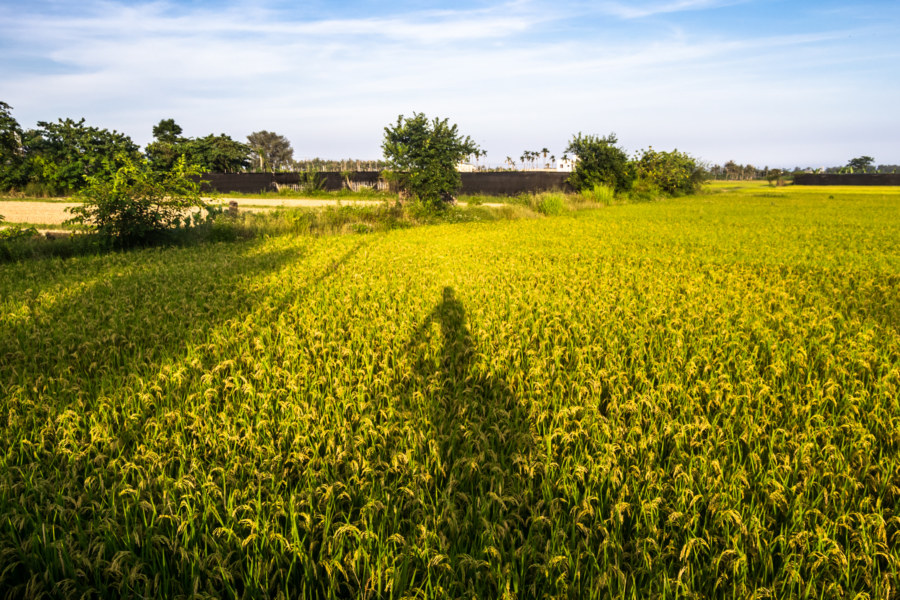
Dispatches from the countryside, beyond the dense urban cores, amidst the long fields and low buildings. See also: agricultural, landscapes, and mountains.
Adjacent Terms
Liujiao Brick Kiln 六腳磚窯
Liùjiǎo Brick Kiln 六腳磚窯 was an unexpected discovery while riding from Beigang to Puzi earlier this summer. The chimney is plainly visible from the roadside and the crumbling bulk of the kiln can be discerned in a gap between the row of houses out front. Stopping to take a closer look I went around (and through) the old kiln to document what remains. Liujiao is a rather obscure part of rural Chiayi so I’ve not found any mention of this place online apart from this brief post. Whereas several kilns in various other parts of Taiwan are being preserved this obscure ruin is almost certainly never going to be the object of a conservation effort.
Life Is a Gas
Gas tanks next to an old tobacco barn in Eastern Taiwan.
Two weeks ago I noticed this stack of natural gas tanks outside the Fènglín Tobacco Barn 鳳林菸樓 in Dàróng First Village 大榮一村, one of several sites identified as Tobacco Barn Cultural Settlements 菸樓文化聚落 in the Huādōng Valley 花東縱谷. Having spent some time last year exploring remnants of the tobacco industry in Taichung I figured it might be interesting to sample what might be found out east. I’ll have more to share from that mission at a later date—but for now, these tanks shall serve as a placeholder for future elucidations.…
Liancun Tobacco Barn 鎌村菸樓
Liáncūn Tobacco Barn 鎌村菸樓 is a historic building on the agrarian outskirts of Fengyuan, Taichung, and one of the last of its kind. Back in the tobacco industry heyday of the 1950s there were more than 100 tobacco barns in this small agricultural community. Almost all the others have been torn down or fallen into grave disrepair over the years but this one remains in surprisingly good condition, a testament to the upkeep of the owners, who still live inside. I haven’t had any luck sourcing credible historic information about this place—it isn’t an officially designated heritage property nor a tourist attraction—but I’d hazard a guess that it is at least 70 years old. I would have asked the old lady in the courtyard but she didn’t seem all that interested in having a chat—though she warmly granted permission to shoot these photographs when asked.
Xizhou Chenggong Hostel 溪州成功旅社
During a recent visit to Xizhou, a small rural township in southern Changhua, I made a brief stop to check out the historic Chénggōng Hostel (成功旅社](https://www.facebook.com/pages/成功旅社農用書店/774365992596884)). I had no idea what to expect, having learned of its existence while browsing Google Maps in search of points of interest, and was pleasantly surprised by what I found there. It is privately owned and operated but they’ve gone to great lengths to preserve the building, transforming it into a tourist attraction and community space. The ground floor is home to a shop showcasing local products and a dual-purpose agricultural library and event space. Upstairs is something of a museum, lightly furnished with rickety beds and tatami mats. The floorboards creak and there is a mustiness about the place that makes it feel genuinely old. It wasn’t difficult to imagine what it might have been like half a century ago in the midst of the sugar boom.
Xizhou Telecom Bureau 溪州原電信局
This week I visited the small town of Xizhou in southern Changhua to locate the eponymous Xizhou Theater. I found no way into the theater but made a serendipitous discovery while walking around the block in search of another access point. Across the street I noticed the utilitarian outline of the former Xizhou Telecom Bureau (溪州原電信局), a modest building that once housed a combined post office and service counter for the state phone company, then known as the [Directorate General of Telecommunications (交通部電信總局). The sign above the entrance simply reads Diànxìnjú (電信局), or “telecommunications bureau”, which is all anyone needed to know in those days. Taiwan’s telecom monopoly was broken up in 1996 with the privatization of what became known as Chunghwa Telecom (中華電信). In the absence of any sort of historic information about this obscure abandoned office I’d guess it was built sometime in the late 1970s or early 1980s.
Shuangxi Donghe Theater 雙溪東和戲院
Dōnghé Theater 東和戲院 is an obscure ruin in Shuangxi, a former mining town of approximately 8,000 residents in the mountains of eastern New Taipei. Despite its diminutive size and relatively remote location, Shuangxi has a colorful history extending back to the late Qing dynasty era. Its prime location at the confluence of Mudan Creek and the eponymous Shuang River made it an ideal transshipment point for people and goods traveling to and from Ruifang. The surrounding hills also contained rich deposits of gold and coal deposits, sparking a mining boom that peaked in the mid-20th century with dozens of mines and more than 30,000 miners in the area. Two theaters were in business in the 1950s, but the local entertainment industries declined along with the mining industry, and only the ruins of Donghe Theater remain to provide a glimpse into the past. Although it isn’t formally protected, the site has been tidied up and anyone is welcome to wander in and take a look.
Xizhou Theater 溪州戲院
Some people are into urban exploration for the optics—they love visiting the most visually-impressive places and taking cool photos—but I’m just as interested in documenting history and solving puzzles. Animated by curiosity, I have become proficient in navigating the Chinese language web in search of leads. Not all of these turn out to be something interesting but I enjoy those rare days where I set out into the countryside and see how many candidate sites I can knock off my list. This is what originally brought me to the gates of the humble Xizhou Theater 溪州戲院 in the small town of Xizhou, Changhua.
A Short Ride Around Western Taoyuan
Last October, while living in Zhongli, I ventured out into the countryside for a random bicycle ride on Halloween. Like most of my rides I didn’t have a route planned or anything, only a general intention of checking out the obscure Fugang Old Street (富岡老街) about 15 kilometers west of the city. Along the way I followed my intuition (with a little help from Google Maps) and captured photographs of anything interesting and unusual I came across. Featured here are more than two dozens pictures from this ride through parts of Zhongli, Xinwu, Yangmei, and Pingzhen in western Taoyuan.
Dadu Plateau Anti-Airborne Fortifications 大肚台地反空降堡
Dàdù Plateau (大肚台地) is a geographic feature of great strategic importance to the defense of central Taiwan. It overlooks the Qīngshuǐ Coastal Plain (清水平原) and occupies high ground on the far edge of the Taichung Basin (台中盆地), home to the majority of the population of Taichung, the third most populous metropolitan area in the nation. The entire length of the plateau is peppered with military facilities from the massive Ching Chuan Kang Air Base (空軍清泉崗基地) in the north to Chénggōng Ridge (成功嶺) down south. In between one will find a number of abandoned or disused bunkers, gun towers, and blockhouses. This post focuses on seven anti-airborne fortifications located in the central part of the plateau starting with the #7 Anti-Airborne Fort (七號反空降堡), my introduction to this cluster of ruins.
